How to Market a Referral Program to Your Customers Using the Four Laws of Behavior Change
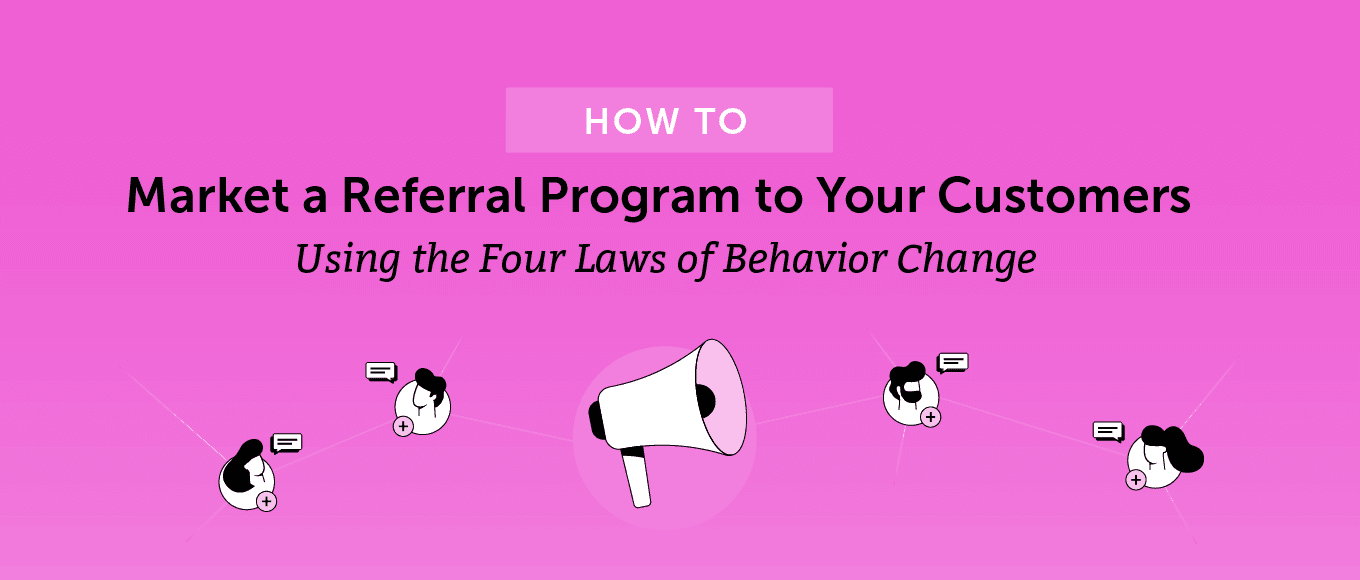 Some of the best referral programs in the world are run by marketing managers with little or no advertising budget, including Tesla. Consider your current marketing plan and imagine what that might look like if your budget was stripped tomorrow. Would customers still continue coming through your door, or would your business stagnate?
In this article, we show you how to use the “Four Laws of Behavior Change”, as detailed by James Clear’s bestseller Atomic Habits, to successfully market your referral program.
You’ve poured weeks of effort into building your new referral program. You’re sure it’s going to be a hit with your current customers. You’ve estimated the number of customers who will join your program. You’ve also estimated the number of referrals these people will bring in each month, and you’ve calculated how much that would mean to this quarter's profit.
The numbers are exciting and everybody around you, your business partners, friends, family, and even your most loyal customers, all agree it’s an excellent program.
And then you launch. You shout about your new referral program on social media, on your website, in email marketing campaigns, and everywhere else where you’re speaking to your customers. But the response is mute.
The numbers after one week are tiny compared to your forecasts and you’re left wondering why something which received such positive pre-launch feedback has failed to materialize as you imagined.
Some of the best referral programs in the world are run by marketing managers with little or no advertising budget, including Tesla. Consider your current marketing plan and imagine what that might look like if your budget was stripped tomorrow. Would customers still continue coming through your door, or would your business stagnate?
In this article, we show you how to use the “Four Laws of Behavior Change”, as detailed by James Clear’s bestseller Atomic Habits, to successfully market your referral program.
You’ve poured weeks of effort into building your new referral program. You’re sure it’s going to be a hit with your current customers. You’ve estimated the number of customers who will join your program. You’ve also estimated the number of referrals these people will bring in each month, and you’ve calculated how much that would mean to this quarter's profit.
The numbers are exciting and everybody around you, your business partners, friends, family, and even your most loyal customers, all agree it’s an excellent program.
And then you launch. You shout about your new referral program on social media, on your website, in email marketing campaigns, and everywhere else where you’re speaking to your customers. But the response is mute.
The numbers after one week are tiny compared to your forecasts and you’re left wondering why something which received such positive pre-launch feedback has failed to materialize as you imagined.
How to Market a Referral Program to Your Customers Using the Four Laws of Behavior Change
Click To TweetFinding the Cause of Failure
Your referral program clearly has benefits for your customers in the form of a reward, so the lack of action when you launched your program possibly wasn’t because of a failure in the program itself, but a failure in the positioning of this program to your customers. You probably spend a lot of time communicating with your customers, and trying to convince them to do things that don’t directly involve buying our products. Marketing your businesses isn’t always about direct selling, but it is always about compelling people to take action. By using the Four Laws of Behavior Change, and by looking at examples of how others use these laws, you can position your program more successfully and compel your customers to take action.The Four Laws of Behavior Change
This framework is traditionally used to develop good and consistent habits, but it’s also easily applied to your program. The framework is broken down into four laws:- 1st Law: Make it Obvious
- 2nd Law: Make it Attractive
- 3rd Law: Make it Easy
- 4th Law: Make it Satisfying
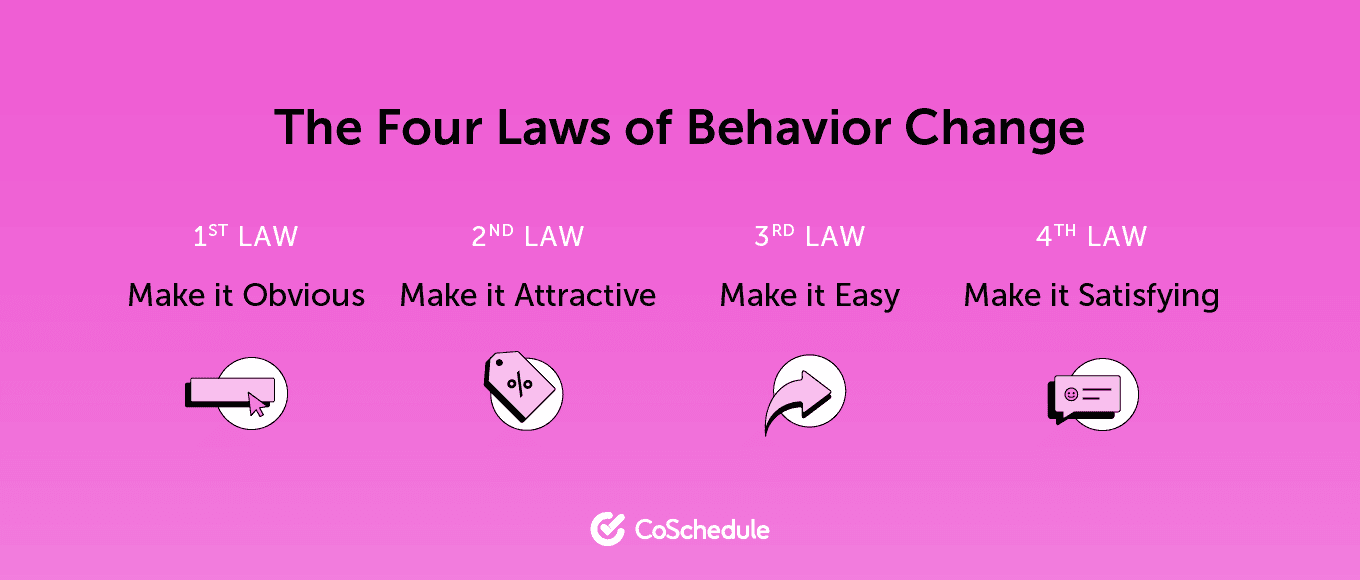
Make it Obvious
This first law relates to “the cue”, or the ‘attention grabber’. It’s important you place the opportunity to join the referral program in obvious places, where your customers will find it. For example, placing an ‘Ambassador’ link in your main website navigation ensures it isn’t hidden away from those who want it the most.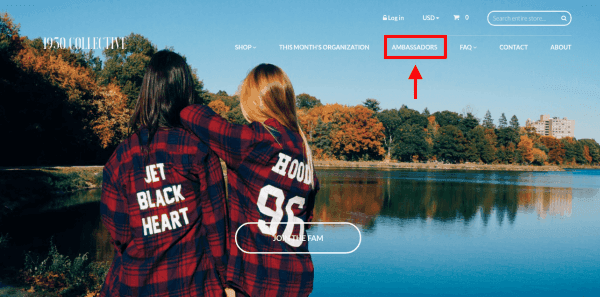 Your website homepage is the most likely point of entry for your customers so ensure the page makes clear reference to your referral program.
Your website homepage is the most likely point of entry for your customers so ensure the page makes clear reference to your referral program.
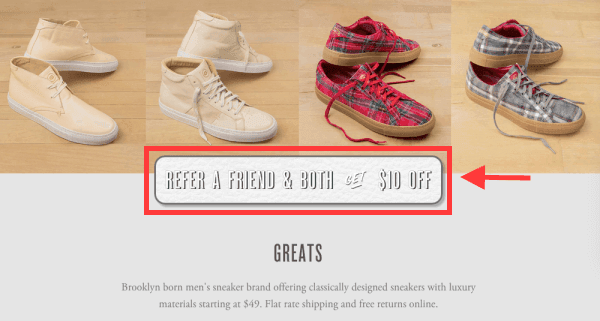 While both of the above examples show how to generically target customers, it’s also important to consider the points in the journey where customers are more likely to want to refer you to a friend. Most commonly this would be after they have purchased a product or signed up to your mailing list. HubSpot does this well by inviting new customers to refer a friend after they have registered.
While both of the above examples show how to generically target customers, it’s also important to consider the points in the journey where customers are more likely to want to refer you to a friend. Most commonly this would be after they have purchased a product or signed up to your mailing list. HubSpot does this well by inviting new customers to refer a friend after they have registered.
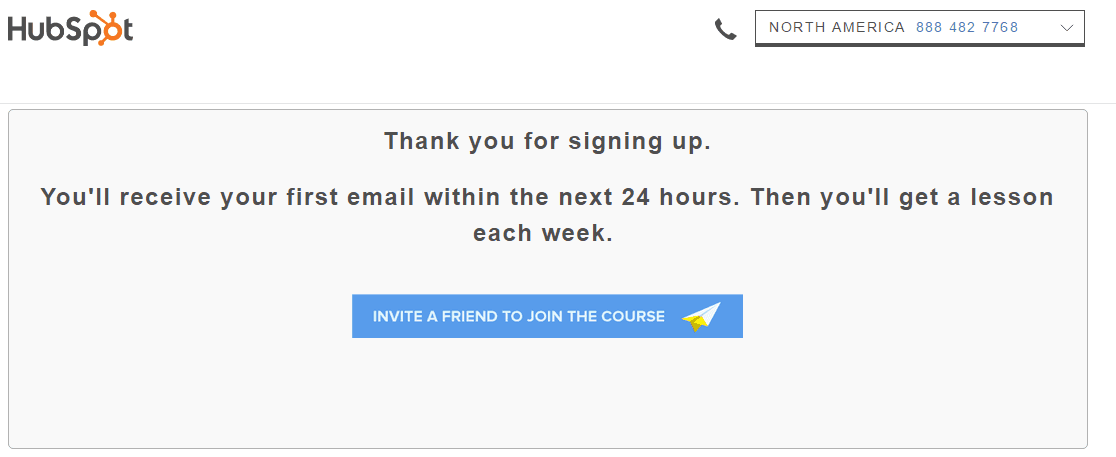 Some customers need time to assess their purchase before they’re ready to recommend a friend, so be sure to send a follow-up email three days after their purchase or registration to invite them to refer a friend. Lots of companies do this well when seeking a product review (see below), but the same concept should be adapted for your referral program.
Some customers need time to assess their purchase before they’re ready to recommend a friend, so be sure to send a follow-up email three days after their purchase or registration to invite them to refer a friend. Lots of companies do this well when seeking a product review (see below), but the same concept should be adapted for your referral program.
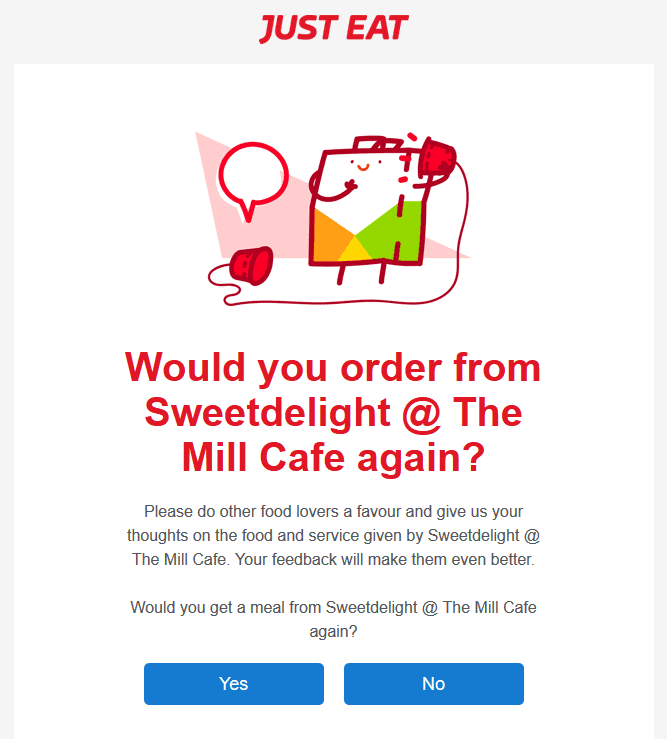
Make it Attractive
This second law means the rewards given to both your customers and the people they refer to you should be appealing enough to ensure they both take action. When people sign up for your referral program they do so with an image of the end result already in their mind. They’re not signing up to your program because they’re helping you; they’re doing so because of what they receive in return. Your goal in this section is to achieve two things:- Discover what your customers truly crave. What is the one reward you can give them that they really want and need? This is likely to be a form of monetary gain to reduce their costs. For example, Tesla’s referral program offers 1,000 free Supercharger Miles to both the referring and referred customer. This equates to a saving of approximately $80 USD each. In addition, there is also a chance for the referring customer to win a new Tesla supercar. What do Tesla owners want more than anything? Free miles and a new Tesla supercar, of course. Consider what your customers truly want and find a way to offer it. To be able to offer what your customers truly want, we first need to know what it is that they want. We can find this out in a number of ways:
- Listen to them. Survey your customers to find out what they like the most from your current business model, and what they like the least. To make this easier, consider some of the things you feel may be important to them, and ask your readers to grade each of them from “No Importance” to “High Importance” when they were making their purchase decision. You’ll very quickly understand what is and isn’t important to them.
- Build a customer profile. By speaking directly with some of your best customers, you can understand the full purchase and decision making process they went through before committing to spending their money with you. You can understand who else they considered and what it was about you and your business that convinced them to choose you.
- Hang out in similar neighborhoods. I generally refer to ‘digital neighborhoods’ in this example. For example, if there are specific social media groups or channels that your target market use, ensure you’re a member in those same circles so you can listen to and research the words your market uses. If you find a group of like-minded people all stating a need for the same thing, find a way to offer it.
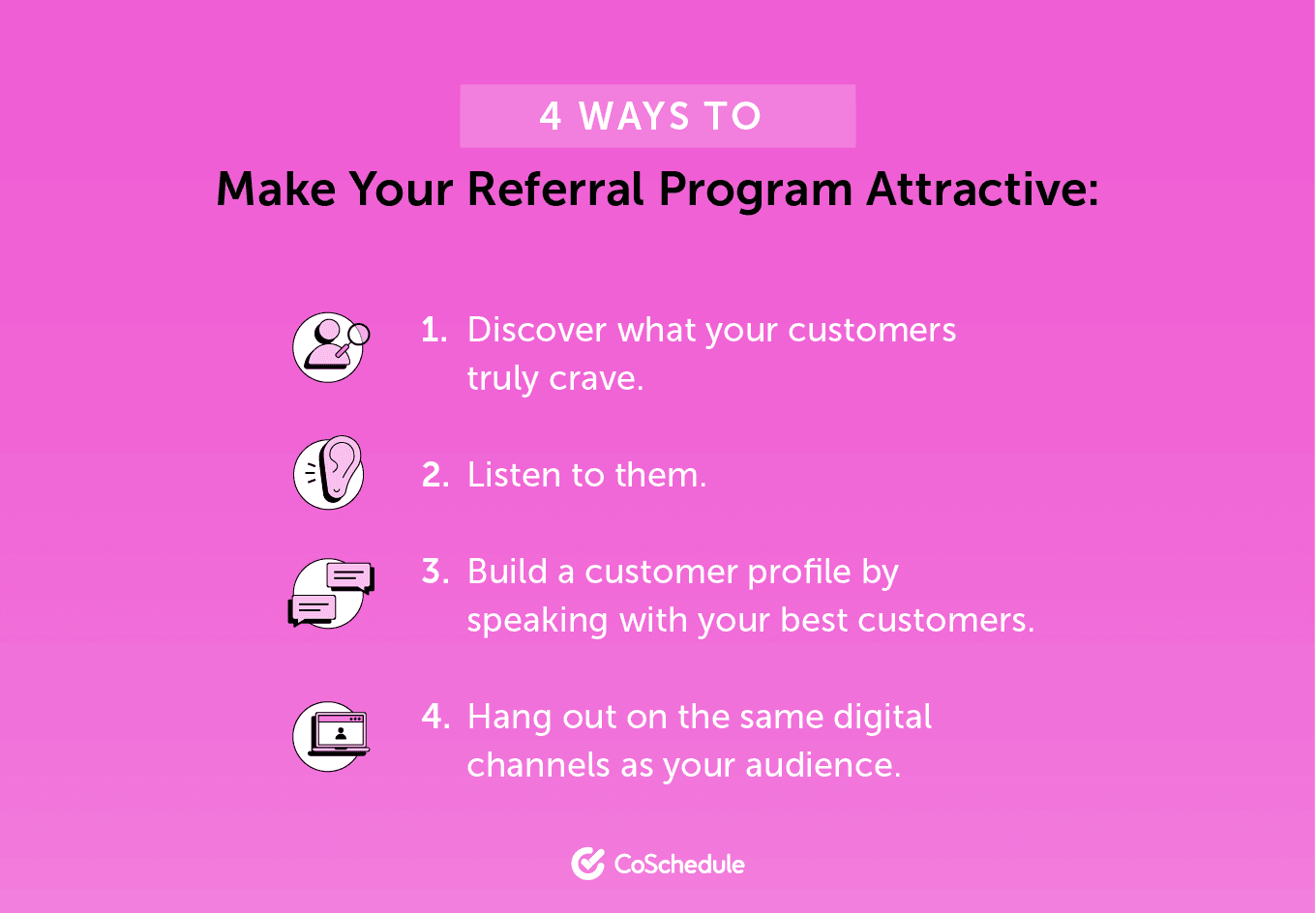 The second way to make your program attractive is to ensure the reward you offer is communicated effectively using excellent copy. You might offer the best reward, but without effectively communicating this to your customers, it’ll fall flat.
To ensure your copy is on point, ensure you use the ‘Rule of 100’. This rule dictates that when framing a discount or an offer, your copy displays the highest number.
The second way to make your program attractive is to ensure the reward you offer is communicated effectively using excellent copy. You might offer the best reward, but without effectively communicating this to your customers, it’ll fall flat.
To ensure your copy is on point, ensure you use the ‘Rule of 100’. This rule dictates that when framing a discount or an offer, your copy displays the highest number.
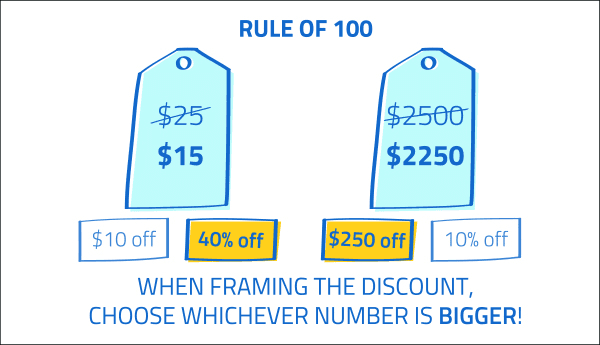 For example, in the case of Tesla’s referral program, their copy could state one of two things:
For example, in the case of Tesla’s referral program, their copy could state one of two things:
- Option 1: “You will receive 1,000 free Supercharger Miles”
- Option 2: “You will receive $80 worth of free Supercharger Miles”.
Make it Easy
So far you have made your referral program obvious and made it attractive by strategically offering what your customers truly need with compelling copy. The next law is ‘make it easy’. Regardless of how obvious and attractive your program is, nobody will take action if it isn’t easy to do so. For example, when you’re trying to entice people to sign up for your loyalty program, you might think to make it easy means adding a post to your Facebook business page, which links to a purpose-built landing page on your website, which includes a form to allow people to sign up. But let’s consider the steps the person needs to take:- Open Facebook
- See your post
- Read the details of the post
- Click the link
- Read the details of the landing page
- Type their details into the form. This is usually their name and email address.
- Click “Sign Up”
- Await a confirmation email
- Click the link in the confirmation email to confirm their email address
- And then they can finally start building points or earning rewards in your loyalty program
 To make it easy, send your customers an email three days after they purchase from you, and then every four months thereafter. This email should contain clear instructions of how to refer friends, and should be solely dedicated to promoting your referral program to keep the message clear and to the point.
Be sure to include a personalized referral link and social share buttons with referral messages pre-scripted into the buttons. By pre-scripting the messages, your customers only have to click the button to share. ‘Topbox’ does this well in their Twitter share button. See the results below.
To make it easy, send your customers an email three days after they purchase from you, and then every four months thereafter. This email should contain clear instructions of how to refer friends, and should be solely dedicated to promoting your referral program to keep the message clear and to the point.
Be sure to include a personalized referral link and social share buttons with referral messages pre-scripted into the buttons. By pre-scripting the messages, your customers only have to click the button to share. ‘Topbox’ does this well in their Twitter share button. See the results below.
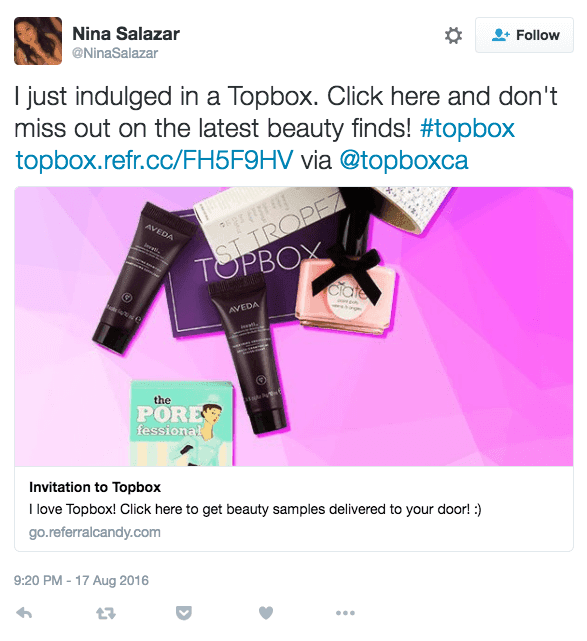
Make it Satisfying
The first three steps have ensured your program is placed in an obvious position where your customers will easily find it, is attractive enough to compel action, and when they’re ready to take action, it is easy to do so. The final law, making it satisfying, ensures the reward for taking action is so good your customers want to talk about it. For example, Tesla’s original referral program before February 2019 was so good there were Tesla customers such as Andy Slye who had gone to the effort of creating whole YouTube channels dedicated to talking about Teslain an effort to refer more people. Building and maintaining a YouTube channel takes a lot of effort, but clearly the rewards were more than worth it for Andy. As you can see from the image above, Andy did very well, earning himself two free Tesla cars as referral rewards. The goal here is to demonstrate the rewards your customers have received, although this is difficult to do when you first launch the program. Once your program is established, contact your top five referring customers to ask if you can use their success as an example


